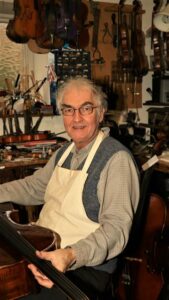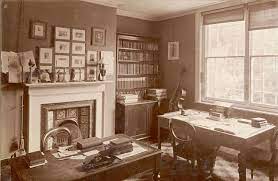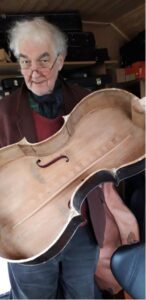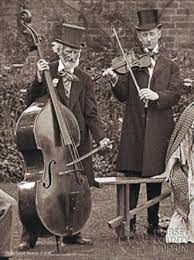A violin restorer from Cattistock is bringing a cello which belonged to Thomas Hardy’s grandfather back to life.
Hardy’s grandfather, also called Thomas, played in the Stinsford Quire between 1800 and 1840.

Over the last six decades, John Dike has been bringing back alto, soprano and tenor radiance into the violin-family instruments he is asked to restore.
He learned the alchemy of his craft at the London College of Furniture in the late 1970s under the guidance of Patricia Naismith and restoration under Harold Herne.
And it was John who was the obvious choice to join Wessex folk musician Colin Thompson to look at the cello.
For several months, John has been working his magic on the instrument, which has been resting at The Hardy Society since it was bequeathed by the late Frank Herring.
John said: “The history of the instrument is fascinating because of its association with the family of Thomas Hardy.
“The restoration of the cello has been difficult owing to the amount of worm damage.
“I’ve replaced some areas with new wood, patched and strengthened other areas and now the instrument is back together and hopefully, will be soon playing again.”

It was inevitable Thomas Hardy would foster a deep love of music, given his father and grandfather, both named Thomas, were musicians and together with Uncle James, were members of the Stinsford Quire, playing regularly in the gallery above the nave.
In 1847, the Stinsford Church Band played at John and Mary Antell’s wedding at Bockhampton, where the young Thomas Hardy, aged just seven, played second fiddle alongside them.
The project started after Colin Thompson received an email from chairman of The Hardy Society, Dr Tony Fincham, about a cello which was suspected to have been played in the Stinsford Church Band.
Colin said: “This instrument had been donated to The Hardy Society from the estate of the late Frank Herring of Herrings Art Supplies of Dorchester.

“Frank acquired the instrument from Hubert Gale, a carpenter who lived in Orchard Street and had a workshop in a three-storey building opposite Greys School Passage, who was related to the Antell and Hardy families. First impressions were a little disappointing as the woodworm infestation was very bad in the back, ribs and pegbox.
“John and I were able to examine the inside of the cello using an endoscope with a built-in camera.
“The first observation was that the cello was well made with craftsmen like blocks and linings.
“We found an old repair patch fitted to strengthen worm damage in the upper right bout and the belly which had appeared to have less worm damage but was in fact riddled. The holes had been filled and well disguised on the outside.
“Now came the real revelation, a small oval repair label reading ‘N Sparkes repairer Bristol’ and even more exciting was the writing in black ink on the underside of the belly – ‘Repaired by N Sparkes for J Antell 1892’.
“On the outside is a label addressed Mr J Antell, Puddletown and on the inside ‘when empty please return to N Sparks, 9 Stuart Street. Barton Hill Road’.”
Nathanial Sparks was of course Hardy’s cousin and John Antell was a musician and poet who played in the Stinsford Church Band.
The Thomas Hardy Society secretary Tracy Hayes said: “We can confirm the cello belonged to Thomas Hardy the first and now this historical piece has been restored, we are hoping to house it in the Dorset History Centre.”




